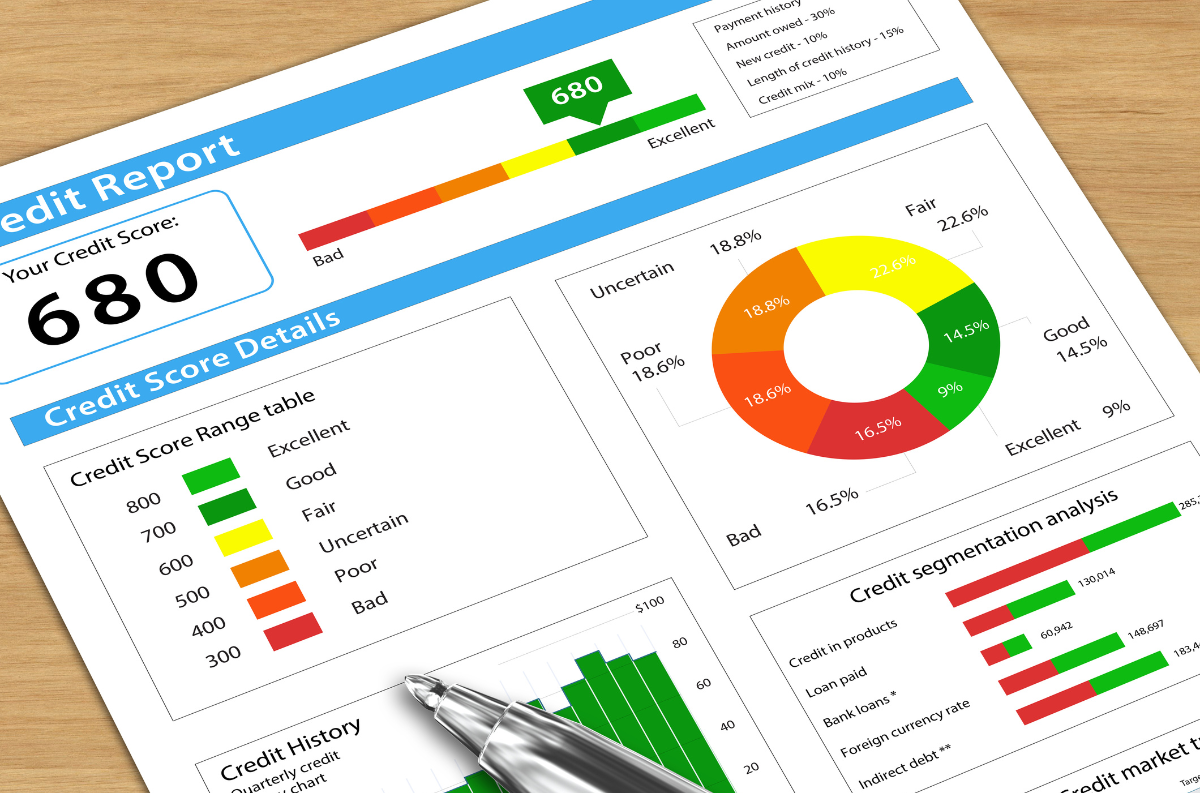
The Role of AI and Machine Learning in Enhancing LOS Systems
In the rapidly evolving world of financial services, Loan Origination Software (LOS) systems stand at the forefront of innovation, driving efficiency and accuracy in the lending process. These systems, integral to the operations of financial institutions, have undergone significant transformations over the years. Today, the integration of cutting-edge technologies like Artificial Intelligence (AI) and Machine Learning (ML) is further revolutionizing LOS systems, opening new avenues for enhanced performance and customer satisfaction.
LOS systems, traditionally designed to manage the loan application and approval process, are now evolving into more sophisticated platforms. They are not just tools for processing applications but have become pivotal in decision-making, risk assessment, and providing personalized financial solutions. The advent of AI and Machine Learning in these systems marks a significant leap forward, offering unprecedented capabilities in data analysis, automation, and predictive modeling.
This integration of AI and ML into LOS systems is reshaping the lending landscape. It’s enabling financial institutions to process loan applications with greater speed and precision, reduce risks associated with lending, and offer a more streamlined and customer-friendly experience. As we delve deeper into the role of AI and Machine Learning in enhancing LOS systems, we uncover the myriad ways these technologies are not just supporting but also advancing the objectives of lenders and borrowers alike.
In the following sections, we will explore the fundamentals of LOS systems, understand the mechanics of AI and Machine Learning, and examine how their convergence is setting new standards in the lending industry. From improved operational efficiencies to more informed decision-making processes, the impact of these technologies on LOS systems is profound and far-reaching, signaling a new era in the world of financial lending.
Understanding LOS Systems
To appreciate the transformative impact of AI and Machine Learning on Loan Origination Software (LOS) systems, it’s essential first to understand what LOS systems are and their fundamental role in the lending industry. LOS systems are specialized software platforms designed to streamline and manage the loan application and approval process. They serve as the backbone of lending operations for banks, credit unions, and other financial institutions, handling a range of tasks from application intake to credit analysis, underwriting, and final approval.
Primary Functions of LOS Systems
LOS systems are multifaceted, offering a suite of tools to facilitate various stages of the loan origination process. Their primary functions include:
1. Application Processing: LOS systems automate the collection and processing of loan applications, ensuring that all necessary information is gathered efficiently and accurately.
2. Credit Scoring and Underwriting: They assist in evaluating the creditworthiness of applicants by analyzing credit scores, financial history, and other relevant data.
3. Compliance and Reporting: Ensuring compliance with regulatory standards is a critical aspect. LOS systems help in adhering to various lending laws and regulations while generating necessary reports for internal and external use.
4. Document Management: These systems manage the multitude of documents involved in loan processing, from initial application forms to final loan agreements.
5. Communication and Customer Service: LOS systems often include tools for communication with applicants, providing updates on application status and next steps.
Evolution of LOS Systems in the Financial Industry
The evolution of LOS systems reflects the broader changes in the financial industry, especially the shift towards digitalization. Initially, these systems were primarily focused on automating paperwork and basic processing tasks. However, as technology advanced, so did the capabilities of LOS systems. They began to incorporate more sophisticated data analysis, risk assessment models, and integration with other financial software, offering a more holistic approach to loan origination.
The modern LOS system is not just a tool for efficiency; it’s a comprehensive platform that enhances decision-making, reduces risks, and improves customer experiences. The integration of AI and Machine Learning is the latest step in this evolutionary journey, marking a shift from manual, rule-based processes to more intelligent, data-driven operations. This integration is redefining what LOS systems can achieve, setting new benchmarks in speed, accuracy, and predictive capabilities in the lending process.
The Emergence of AI and Machine Learning in Finance
The financial sector, known for its quick adoption of cutting-edge technologies, has witnessed a significant transformation with the emergence of Artificial Intelligence (AI) and Machine Learning (ML). These technologies, which are at the forefront of the fourth industrial revolution, are reshaping the landscape of financial services, including lending.
AI, with its ability to perform tasks that typically require human intelligence, and ML, a subset of AI that focuses on the development of systems that can learn from and make decisions based on data, are revolutionizing the way financial data is analyzed and utilized. In the context of finance, these technologies are not just tools for automation; they are instruments for enhancing accuracy, efficiency, and personalized service delivery.
In lending, particularly, AI and ML are being leveraged to refine decision-making processes, augment risk assessment models, and offer tailored customer experiences. These technologies have the capability to process and analyze vast quantities of data, identify complex patterns, and predict outcomes with a level of precision and speed far beyond human capabilities. This is particularly transformative in the realm of Loan Origination Software (LOS) systems, where the efficiency and accuracy of processing loan applications are paramount.
AI and ML in finance are not just about processing power; they are about smarter processing. They enable financial institutions to go beyond traditional data analysis methods, tapping into a broader range of data sources, including non-traditional ones, to gain a more comprehensive view of a borrower’s creditworthiness. This holistic approach to data analysis helps in identifying potential risks and opportunities that might not be evident through conventional methods.
The integration of AI and ML into financial operations, especially LOS systems, marks a significant shift from manual, rule-based processes to more dynamic, data-driven, and intelligent operations. This shift is setting new standards in the lending industry, particularly in how loan applications are processed, evaluated, and managed. As we continue to explore the role of AI and Machine Learning in enhancing LOS systems, it becomes clear that these technologies are not just supporting the existing infrastructure; they are redefining it, paving the way for a more efficient, accurate, and customer-centric lending landscape.
Enhancing LOS Systems with AI and Machine Learning
The integration of Artificial Intelligence (AI) and Machine Learning (ML) into Loan Origination Software (LOS) systems is revolutionizing the lending process. These advanced technologies are enhancing various aspects of LOS systems, making them more efficient, accurate, and user-friendly. Here’s how AI and ML are contributing to the evolution of LOS systems:
1. Automated Decision-Making: AI algorithms are capable of automating many decision-making processes in loan origination. This includes tasks such as initial credit scoring, eligibility checks, and preliminary risk assessments. By automating these processes, LOS systems can process loan applications much faster, reducing the time from application to decision.
2. Risk Assessment and Credit Scoring: ML models in LOS systems can analyze both traditional and non-traditional data sources to assess credit risk more accurately. This includes not only financial data but also alternative data such as utility payments, rental history, and even certain behavioral indicators. By leveraging this broader range of data, LOS systems can offer a more nuanced view of a borrower’s creditworthiness, leading to more informed lending decisions.
3. Fraud Detection and Prevention: AI systems are particularly adept at identifying patterns that may indicate fraudulent activity. In LOS systems, they can analyze application data to spot inconsistencies, anomalies, or patterns that are commonly associated with fraudulent applications. This capability is crucial in enhancing the security of the lending process and protecting both lenders and borrowers from potential fraud.
4. Personalization and Customer Experience: AI-driven LOS systems can offer personalized loan products and services based on an individual borrower’s financial behavior and needs. By analyzing past interactions, financial history, and even social media data, these systems can tailor loan offerings to better match the specific requirements and circumstances of each borrower, thereby improving the overall customer experience.
5. Process Optimization and Efficiency: AI and ML can continuously learn from new data, which means that LOS systems can become more efficient and accurate over time. This learning capability allows for the constant optimization of lending processes, from application sorting to underwriting criteria, ensuring that the systems remain up-to-date with the latest trends and best practices in lending.
The integration of AI and ML into LOS systems represents a significant leap forward in the field of lending. These technologies not only automate and streamline processes but also bring a level of intelligence and adaptability that was previously unattainable. As a result, lenders can make faster, more accurate decisions while providing a better experience for borrowers. This technological advancement is not just enhancing existing LOS systems; it’s redefining the very nature of lending in the digital age.
Benefits of AI-Enhanced LOS Systems
The incorporation of Artificial Intelligence (AI) and Machine Learning (ML) into Loan Origination Software (LOS) systems brings a multitude of benefits that significantly enhance the lending process. These advanced technologies are reshaping the landscape of lending, offering improvements that are beneficial for both lenders and borrowers. Here are some of the key benefits of AI-enhanced LOS systems:
1. Increased Efficiency in Loan Processing: One of the most immediate impacts of AI in LOS systems is the increased efficiency in processing loan applications. AI algorithms can quickly analyze large volumes of data, automate routine tasks, and make decisions at a pace that far exceeds human capabilities. This efficiency not only speeds up the loan approval process but also allows lending institutions to handle a higher volume of applications without compromising on quality or accuracy.
2. Improved Accuracy and Risk Assessment: AI and ML algorithms are capable of analyzing complex patterns and trends in data, leading to more accurate assessments of a borrower’s creditworthiness. By considering a wider range of variables and data points, these systems can identify risks that might be overlooked by traditional methods. This improved accuracy in risk assessment helps lenders make more informed decisions, reducing the likelihood of loan defaults.
3. Enhanced Personalization and Customer Experience: AI-enhanced LOS systems can tailor the lending experience to individual borrowers by analyzing their specific financial situations, preferences, and needs. This level of personalization not only improves customer satisfaction but also helps in building long-term relationships. Borrowers are more likely to feel valued and understood, leading to increased loyalty and trust.
4. Streamlined Regulatory Compliance: Compliance with various financial regulations and standards is a significant aspect of the lending process. AI-driven LOS systems can be programmed to stay updated with the latest regulatory changes and ensure compliance. This automated compliance monitoring reduces the risk of human error and the potential for costly legal issues.
5. Data-Driven Decision Making: The integration of AI and ML enables a more data-driven approach to decision-making in the lending process. Lenders can leverage insights derived from advanced data analytics to make strategic decisions about loan products, market positioning, and risk management. This data-driven approach can lead to better overall performance and competitiveness in the market.
In summary, AI-enhanced LOS systems represent a significant advancement in the field of lending. They bring about greater efficiency, accuracy, and personalization, all of which contribute to a more streamlined, effective, and customer-centric lending process. As these technologies continue to evolve, they are set to further revolutionize the way lending institutions operate and interact with their customers.
Challenges and Considerations
While the integration of Artificial Intelligence (AI) and Machine Learning (ML) into Loan Origination Software (LOS) systems offers numerous advantages, it also presents certain challenges and considerations that lenders must navigate. Addressing these challenges is crucial for the successful implementation and operation of AI-enhanced LOS systems.
1. Data Privacy and Security: One of the primary concerns with AI-driven LOS systems is the handling of sensitive financial data. The use of extensive personal and financial information raises significant privacy and security issues. Lenders must ensure that these systems are equipped with robust security measures to protect against data breaches and cyberattacks. Compliance with data protection regulations, such as GDPR, is also crucial to maintain the trust of borrowers and avoid legal repercussions.
2. Bias and Fairness in AI Algorithms: Another significant challenge is the potential for inherent biases in AI algorithms. These biases can stem from the data used to train the AI systems. For instance, if historical data reflects certain prejudices or inequalities, the AI system may inadvertently perpetuate these biases in its decision-making process. Lenders need to be vigilant in monitoring for biases and ensuring that their AI systems promote fairness and equality in lending decisions.
3. Regulatory Compliance: The rapidly evolving nature of AI and ML technologies can sometimes outpace existing regulatory frameworks. Lenders must navigate a complex regulatory landscape and ensure that their AI-enhanced LOS systems comply with all relevant laws and guidelines. This includes not only financial regulations but also emerging regulations specific to AI and data usage.
4. Managing Expectations and Trust: As with any technology-driven change, there can be skepticism and resistance from both internal stakeholders and customers. Managing expectations and building trust are essential for the smooth adoption of AI in LOS systems. Lenders should communicate transparently about the capabilities and limitations of AI, and how it is being used to enhance the lending process.
5. Integration with Existing Systems: Integrating AI and ML into existing LOS systems can be a technical challenge. It requires careful planning and execution to ensure that the new technology works seamlessly with the current infrastructure. This integration must be done in a way that minimizes disruptions to ongoing operations.
6. Continuous Monitoring and Updating: AI and ML models are not set-and-forget solutions; they require continuous monitoring, updating, and fine-tuning. Lenders must ensure that their systems are regularly updated with the latest data and algorithms to maintain accuracy and effectiveness.
By addressing these challenges and considerations, lenders can harness the full potential of AI and ML in their LOS systems. While the path may involve navigating complex issues, the benefits of a well-implemented AI-enhanced LOS system – in terms of efficiency, accuracy, and customer satisfaction – are substantial and can significantly outweigh the challenges.
The Future of LOS Systems with AI and Machine Learning
The future of Loan Origination Software (LOS) systems, deeply intertwined with advancements in Artificial Intelligence (AI) and Machine Learning (ML), is poised for transformative changes. As these technologies continue to evolve, they are set to redefine the lending landscape, bringing more sophistication, efficiency, and personalization to the process. Here’s a glimpse into what the future holds for LOS systems powered by AI and ML:
1. Advanced Predictive Analytics: Future LOS systems will likely leverage more advanced predictive analytics, utilizing AI and ML to assess credit risk with even greater accuracy. These systems will be able to analyze a broader range of data points, including non-traditional data, to predict a borrower’s future financial behavior more reliably. This could lead to more nuanced lending decisions, potentially opening up credit to underserved markets while still managing risk effectively.
2. Enhanced Automation and Efficiency: As AI and ML technologies become more sophisticated, the level of automation in LOS systems will increase. This will further speed up the loan origination process, reduce manual errors, and free up human resources to focus on more complex, value-added tasks. The efficiency gains from these improvements could lead to cost savings for lenders and faster, more convenient experiences for borrowers.
3. Integration of Blockchain Technology: Blockchain technology has the potential to revolutionize LOS systems by enhancing security, transparency, and efficiency. Smart contracts on blockchain platforms could automate various aspects of the lending process, including disbursements and repayments, while ensuring the integrity and immutability of transaction records.
4. Personalized Lending Experiences: AI-driven LOS systems will likely offer even more personalized lending experiences in the future. By analyzing individual borrower data in real-time, these systems could provide personalized loan offers, tailored advice, and dynamic pricing. This level of personalization could improve customer satisfaction and loyalty, giving lenders a competitive edge.
5. Regulatory Technology (RegTech) Integration: As regulatory compliance becomes increasingly complex, future LOS systems will integrate more RegTech solutions. AI and ML can help lenders navigate the regulatory landscape more efficiently, ensuring compliance while minimizing the administrative burden.
6. Ethical AI and Responsible Lending: As the use of AI in lending decisions becomes more prevalent, there will be a growing focus on ethical AI practices. This includes developing AI systems that are transparent, fair, and free from bias, ensuring responsible lending practices that uphold the highest ethical standards.
In conclusion, the future of LOS systems with AI and Machine Learning is bright and full of potential. These technologies will not only enhance the operational aspects of lending but also contribute to more strategic, customer-centric, and responsible lending practices. As we move forward, lenders who embrace and adapt to these technological advancements will be well-positioned to lead in the evolving financial landscape.
In Conclusion
The integration of Artificial Intelligence (AI) and Machine Learning (ML) into Loan Origination Software (LOS) systems marks a significant milestone in the evolution of the lending industry. As we have explored, these technologies bring a wealth of benefits, from enhanced efficiency and accuracy in loan processing to improved risk assessment and personalized customer experiences. However, as with any technological advancement, this integration also presents challenges that need careful navigation, particularly in terms of data privacy, regulatory compliance, and ensuring fairness and transparency in automated decision-making.
Looking ahead, the future of LOS systems seems intrinsically linked to the continued advancement and ethical application of AI and ML. These technologies are set to become more deeply embedded in the fabric of financial services, driving innovation and transforming traditional lending practices. The potential for AI and ML to open up new opportunities in lending, particularly in reaching underserved markets and offering more tailored financial products, is immense.
For lenders, staying abreast of these technological developments and adapting to them is no longer optional but a necessity to remain competitive and relevant. This means not only investing in new technologies but also fostering a culture of continuous learning and adaptation. It involves training teams, updating systems, and rethinking traditional business models to leverage the full potential of AI-enhanced LOS systems.
For borrowers, the evolving landscape of LOS systems promises a more streamlined, efficient, and accessible lending process. As LOS systems become more sophisticated, borrowers can expect more transparent, fair, and personalized lending services, aligning more closely with their individual needs and financial situations.
In conclusion, the role of AI and Machine Learning in enhancing LOS systems is a testament to the transformative power of technology in finance. As we move forward, it is imperative for lenders to embrace these changes, not only to improve their operational efficiencies but also to contribute to a more dynamic, inclusive, and responsible financial ecosystem. The journey of integrating AI and ML into LOS systems is just beginning, and the possibilities it opens up are as vast as they are exciting.
























